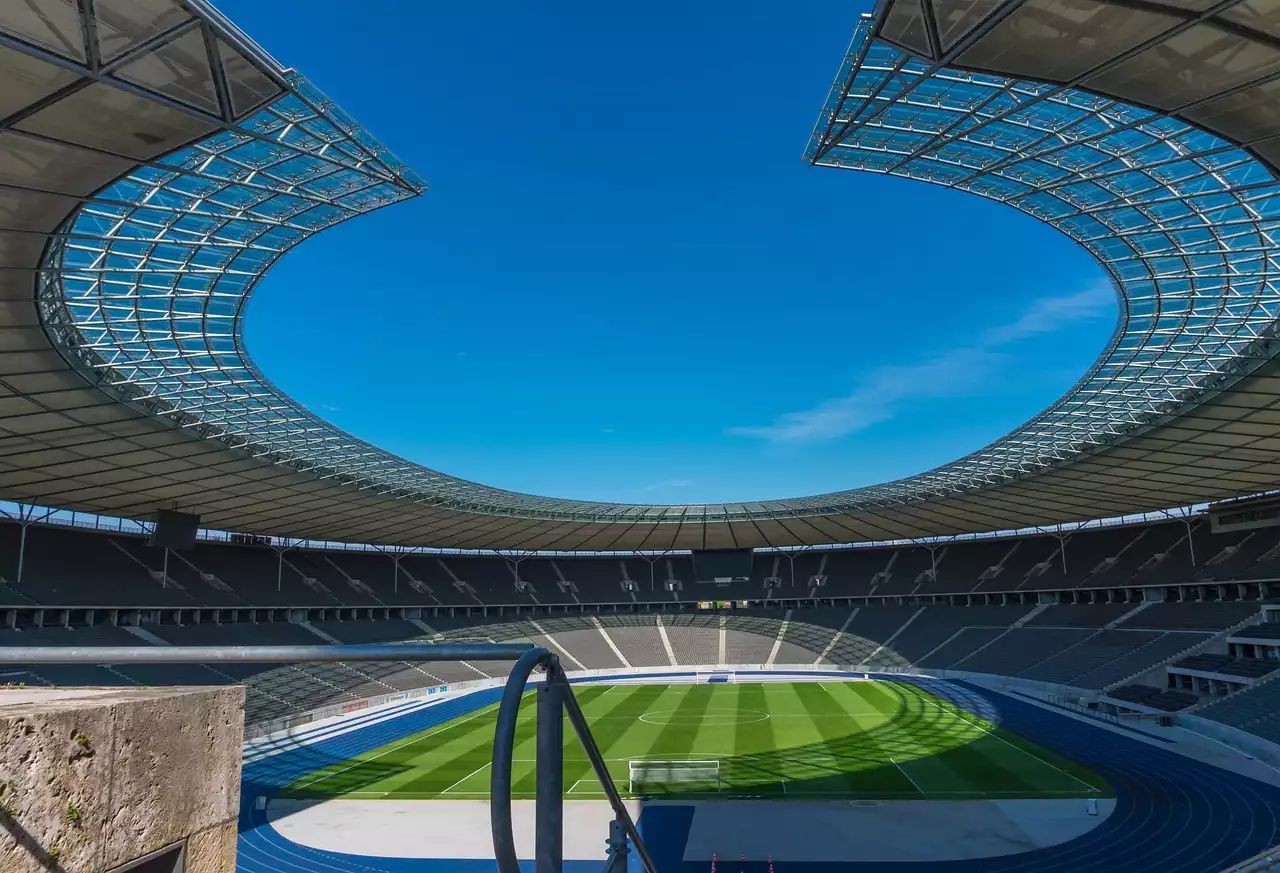The Olympiastadion in Munich has been the home ground of Bayern Munich since the club was founded in 1900. It was also the ground where they won their first-ever Bundesliga title in 1965. It has been used for many high-profile events besides football, including the 1974 World Cup final, the 2006 World Cup final, the 1972 Olympics, and several annual music events including Oktoberfest. It is one of the most famous football stadiums in the world and you should not miss it if you visit Munich. The stadium is located in the Olympic Park, northwest of the city center. It will be one of the host stadiums for the Football World Cup in 2022. The Olympiastadion is Germany’s largest stadium and one of the few that has a running track around its pitch. It was also the world’s largest stadium until 1989. The stadium is best reached by car, but there are good connections to public transport, including the U-Bahn and S-Bahn, which depart from nearby stations. There are also several car parks near the stadium.
History
The Olympiastadion in Munich was built for the 1972 Summer Olympics and has been the home ground of the city’s main football team, FC Bayern Munich, since then. The club was founded in 1900, but the stadium was not built until a decade later. The stadium was designed by the architect Werner March and built by the company Hohenschönhausen. Its name comes from the fact that it was built for the Olympiad (an athletic event in which people from different nations compete in sports) and hosted track and field events during the 1972 Olympics. The German word for a stadium is “Stadion”, hence the name of this stadium.
Events at the Olympiastadion
The Olympiastadion in Munich has been the home ground of FC Bayern Munich since the club was founded in 1900. It was also the ground where they won their first-ever Bundesliga title in 1965. It has also been used for many high-profile events besides football, including the 1974 World Cup final, the 2006 World Cup final, the 1972 Olympics, and several annual music events including Oktoberfest. The stadium was built for the 1972 Summer Olympics and hosted track and field events, as well as the final game of those Olympics. The stadium has also hosted the FIFA World Cup Final, in 1974 and 2006, as well as other important football matches during the World Cup.
Other events at the Olympiastadion
The Olympiastadion in Munich has also been the stage for many music concerts and events. Most famously the venue for the yearly Oktoberfest beer festival, which attracts around 7-8 million visitors every year. But it has also hosted other high-profile music events including the Rolling Stones, Pink Floyd, Michael Jackson and many more. The stadium also hosts the famous New Year’s Eve celebrations in Munich, “Silvester im Stadion”, which attracts around 30-40,000 visitors each year.
Tours and Tickets
Unfortunately, you cannot currently book tours of the Olympiastadion. There are no public tours available, and you can’t even walk freely around the exterior of the stadium. You would need to arrange special access to get inside the stadium. This is not easy or cheap, and you would need to be associated with an event taking place there, or have special permission to gain access.
By foot from Marienplatz
If you want to walk from Marienplatz to the Olympiastadion, the walk will take you about 30 minutes. Start by walking northwards along Bahnhofsstraße, which is directly in front of the Hauptbahnhof. Then, turn right onto the Eisbachstraße, before turning right again onto Streubelstrasse, which will take you towards the Olympiapark. Continue along the road until you see the stadium’s Olympic Tower.
By train from Munich Central Station
If you want to get to the Olympiastadion by train, simply take the S-Bahn (directly above ground) or U-Bahn (underground) to Olympiazentrum. The journey should take around 15 minutes, and trains depart every few minutes. Be sure to get off at the Olympiazentrum, as this is the last stop.
By car from UC Airport
If you are coming to the Olympiastadion by car, best to take the A-92 highway, which is located very close to the airport, and follow the signs for the Olympic Stadium. The journey will take about 20 minutes, but be aware of possible traffic congestion in the city.
Conclusion
The football World Cup is the biggest sporting event on the planet, with billions of people tuning in to watch. As a result, it’s also a fantastic opportunity for cities to promote themselves an appealing place to visit and invest in. In the case of the 2006 World Cup, this was especially true for Germany. The country had just recently been brought to its knees by the horrors of war, with bombed-out stadiums being one of the lasting images from that terrible time.


 Behind the Tactics: Analyzing the Strategic Approaches of Top EFL Championship Managers
Behind the Tactics: Analyzing the Strategic Approaches of Top EFL Championship Managers
 The Role of Stadiums in Enhancing the Appeal of UEFA Nations League Host Cities
The Role of Stadiums in Enhancing the Appeal of UEFA Nations League Host Cities
 FIFA Club World Cup: Players Who Found Success in Multiple Teams
FIFA Club World Cup: Players Who Found Success in Multiple Teams The Santiago Bernabéu Stadium held the 1982 World Cup Final
The Santiago Bernabéu Stadium held the 1982 World Cup Final Stade de France Stadium held the 1998 World Cup Final
Stade de France Stadium held the 1998 World Cup Final Maracanã Stadium held the 1950 and 2014 World Cup Final
Maracanã Stadium held the 1950 and 2014 World Cup Final A look at the famous Wembley Stadium
A look at the famous Wembley Stadium